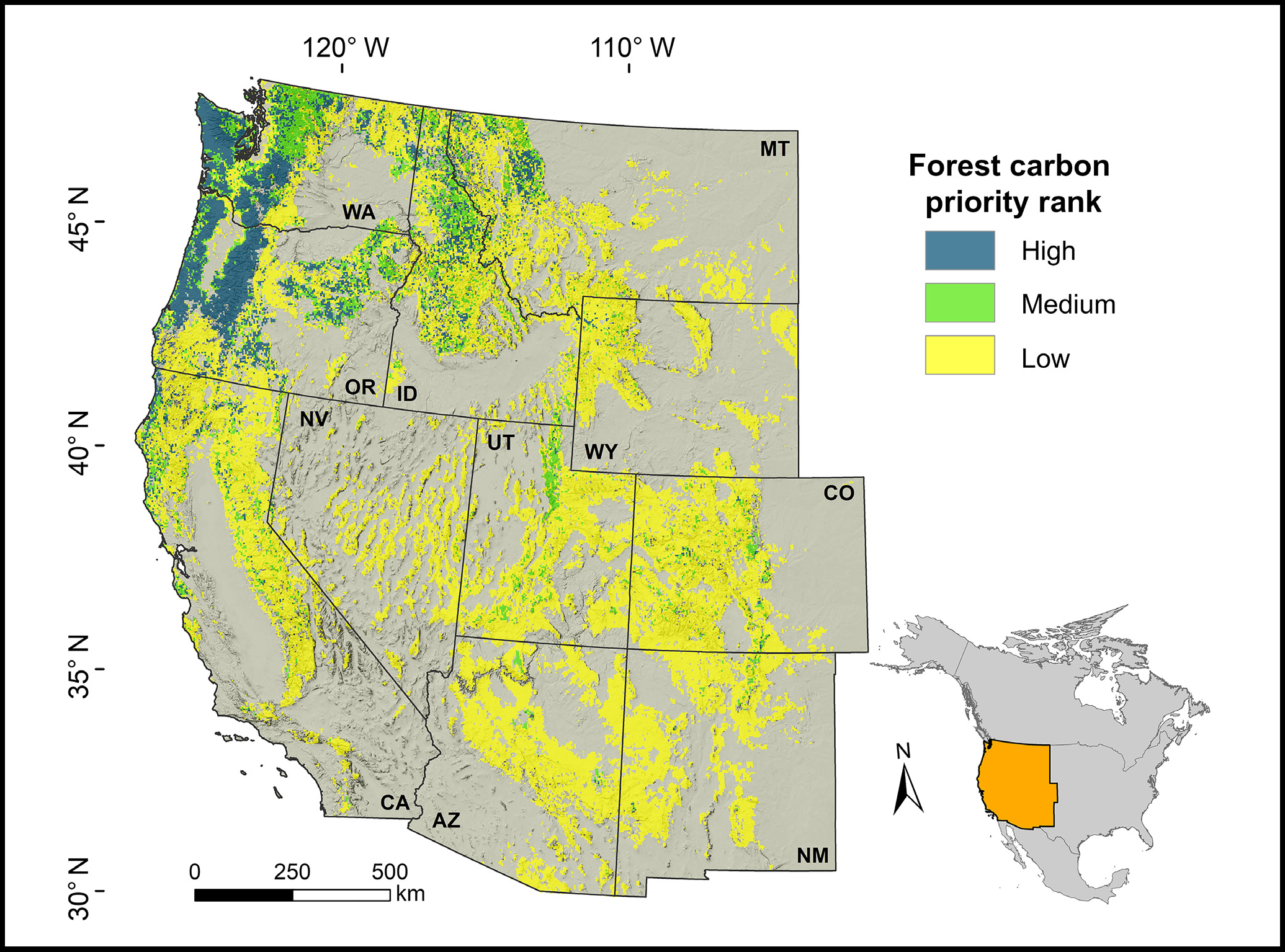Forest Preservation Ranking and Vertebrate Species Richness, Western USA, 2020-2099
This dataset from the North American Carbon Program (NACP) provides related gridded outputs of future modeled forest carbon sequestration priority and related species richness and habitat suitability for the western United States. Establishing this forest carbon preservation priority ranking for forest lands in the western U.S. will help guide the conservation of land for climate change mitigation activities and improved harvest management in the region. The primary dataset is of the ranking of forest lands for preservation in the western U.S. based on the ability of these lands to sequester carbon over the coming century. The preservation ranking was derived from the results of simulations of future potential forest net ecosystem productivity (NEP) and vulnerability to drought and wildfire, as modeled from 2020 to 2099 at 4 km x 4 km resolution using a modified version of the Community Land Model (CLM v4.5). Data files of potential forest NEP and the forest vulnerability ranking are also provided. Co-located data of species richness for amphibians, birds, mammals, and reptiles are included to illustrate habitat suitability in relation to forest carbon preservation rankings. There are two files for each vertebrate class, one reflecting all western U.S. species included in the USGS GAP Analysis Project and a second for the subset of species listed as threatened or endangered by the U.S. Fish and Wildlife Service.
The NACP is a multidisciplinary research program designed to improve understanding of North America's carbon sources, sinks, and stocks. The central objective is to measure and understand the sources and sinks of Carbon Dioxide (CO2), Methane (CH4), and Carbon Monoxide (CO) in North America and adjacent oceans. The NACP is supported by a number of different federal agencies.
Additional data from NACP and other relevant links can be found on the ORNL DAAC's NACP Project Page.
Data Citation: Buotte, P., B.E. Law, W. Ripple, and L.T. Berner. 2020. Forest Preservation Ranking and Vertebrate Species Richness, Western USA, 2020-2099. ORNL DAAC, Oak Ridge, Tennessee, USA. https://doi.org/10.3334/ORNLDAAC/1803

